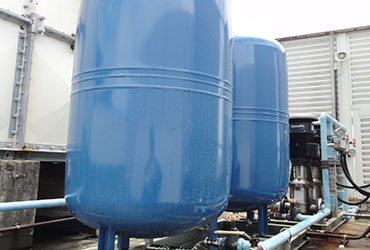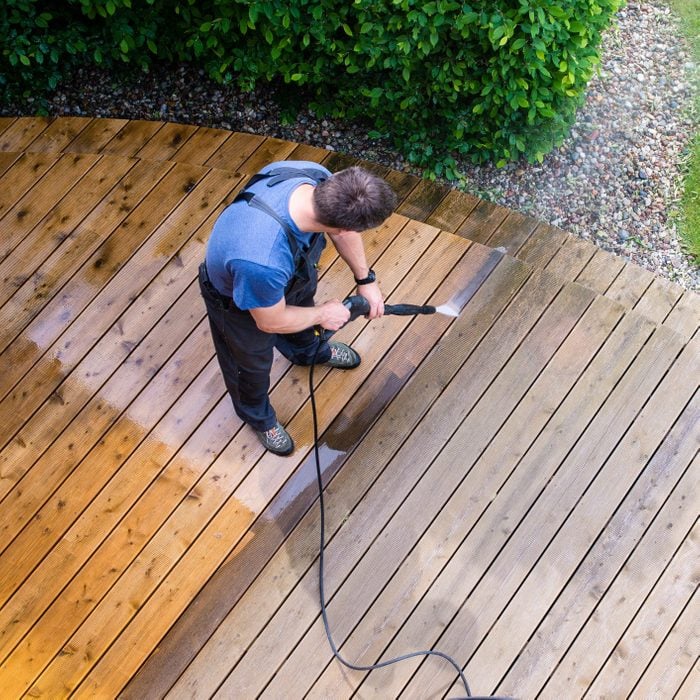Speedy Fixes for Decreased Water Pressure in Your Home
Speedy Fixes for Decreased Water Pressure in Your Home
Blog Article
What're your thoughts and feelings on 4 Ways to Troubleshoot Low Water Pressure?

Low tide stress in your home can be a frustrating problem, affecting every little thing from bathing to cleaning dishes. If you're experiencing weak water circulation, there are numerous possible reasons and services to explore. In this overview, we'll discuss common reasons for low water pressure and functional steps to address the issue efficiently.
Intro to Low Water Stress
Low water pressure takes place when the flow of water from your faucets, showers, and various other components is weaker than usual. This can make everyday tasks more difficult and less effective. Comprehending the causes of low tide stress is important to finding the best option.
Typical Causes of Low Water Stress
Faulty Stress Regulators
Stress regulators are responsible for maintaining regular water stress in your house. If they malfunction, it can lead to low water pressure or unequal circulation throughout the house.
Community Supply Of Water Issues
In some cases, the trouble exists outside your home. Local water concerns, such as main line leaks or upkeep work, can briefly reduce water pressure in your area.
Pipe Obstructions
With time, pipelines can become clogged with natural resource, sediment, or particles, restricting the flow of water. This is a typical concern in older homes with galvanized steel pipelines.
Corrosion
Deterioration within pipelines can bring about leakages and decreased water stress. Rust buildup can constrict water circulation, especially in maturing plumbing systems.
Exactly How to Diagnose Low Tide Pressure
Examining Pipelines
Examine noticeable pipes for indications of leaks, rust, or obstructions. Pay attention to any unusual audios, such as banging or rattling pipelines, which can indicate problems within the plumbing system.
Consulting with a Plumber
If you're incapable to identify the reason for low water pressure, consider hiring an expert plumber to carry out an extensive assessment. They can recognize underlying problems and suggest proper remedies.
Inspecting Taps and Fixtures
Beginning by examining the water pressure at different taps and fixtures throughout your home. If the problem is separated to specific locations, it might indicate localized troubles.
Do It Yourself Solutions to Take Care Of Low Tide Stress
Flushing Hot Water Heater
Debris accumulation in the hot water heater can limit circulation and reduce effectiveness. Purging the container periodically assists remove sediment and maintain optimum efficiency.
Examining Stress Regulatory Authority
Ensure that the pressure regulatory authority is working appropriately. Readjusting or changing the regulatory authority can help restore proper water pressure throughout your home.
Cleansing Aerators and Showerheads
Natural resources can build up in aerators and showerheads, minimizing water flow. Remove and cleanse these elements routinely to boost water pressure.
Clearing Clogs in Piping
For small blockages, attempt using a plumbing serpent or chemical drainpipe cleaner to clear blockages in pipes. Beware when making use of chemicals and comply with safety guidelines.
When to Call a Specialist Plumber
If do it yourself initiatives fail to settle the concern or if you suspect considerable plumbing issues, it's best to seek support from a licensed plumber. They have the proficiency and tools to address complex concerns securely and properly.
Safety Nets to Keep Water Pressure
Mounting a Stress Booster
Consider mounting a pressure booster pump to boost water pressure in areas with regularly low circulation. This can be particularly helpful for multi-story homes or residential properties with high-demand fixtures.
Surveillance Water Use
Be mindful of water usage routines and prevent overtaxing the plumbing system. Straightforward modifications, such as astonishing showers and washing lots, can aid keep adequate water stress.
Normal Upkeep
Set up routine maintenance for your plumbing system to stop problems such as rust, leaks, and obstructions. Addressing minor troubles early can assist prevent even more substantial repair work later on.
Conclusion
Dealing with low tide stress can be irritating, but recognizing the underlying reasons and applying proper solutions can restore ideal circulation throughout your home. Whether it's cleaning up aerators, inspecting pipes, or talking to a plumber, taking aggressive actions can guarantee a consistent supply of water for your everyday requirements.
How to Fix Low Water Pressure
Have you noticed the water pressure in your shower or taps seem a little weak? If so, the water pressure in your home may be lower than it should be.
Low water pressure can affect many areas of your home. You might notice it taking longer to fill the bathtub or washing machine or that you’re not getting the pressure you need from your garden hose.
These pressure changes can be sudden or may happen over time. It may take a little investigating to find the cause, but there’s usually an easy solution.
Testing Water Pressure in Your Home
One easy way to check water pressure at home is with a water pressure gauge. You can find one online or at a hardware or home improvement store.
Before you check the pressure, make sure the taps and appliances that use water are turned off. Then, connect the gauge to the exterior hose bib or tap.
Turn the tap up all the way and read the gauge to see the water pressure. If you don’t have an exterior tap, you can disconnect the hose of your washing machine and connect the water pressure gauge to it.
Make sure all your water-using appliances are turned off. Turn the faucet on high to read your home’s pressure or PSI.
If the idea of checking water pressure or dealing with plumbing issues on your own seems a bit daunting, you can call a professional plumbing service to handle the job.
They can help you find the root of your water pressure issues and determine the best solution to the problem.
Clear the Clogs
A clogged pipe is one of the most common issues that leads to low or no water pressure. Pipes can become clogged due to a buildup of mineral deposits.
This is especially true if you have hard water where you live. Even a small clog can reduce the pressure of water running through the pipes.
Clogs usually build up over time. People notice when it affects their showers or the appliances that use water every day.
There are products and tools for clearing clogs on your own or you can call a plumber. They have the expertise and the right tools to locate clogs and determine whether it’s better to repair or replace the pipe.
Clean or Replace Corroded Pipes
Do you live in an older home where the plumbing is decades old? If so, your pipes are probably prone to corrosion. This is especially true if the pipes are galvanised steel.
This material is likely to corrode after 20 years of use. Brass pipes average 40 to 70 years before corroding, while copper pipes are good for 50 years or more.
If you installed extra plumbing fixtures after building or moving into your home, there’s a good chance you could have corroded pipes. The more plumbing fixtures in the home, the harder your pipes have to work, and the more likely they will corrode.
It’s important to address pipe corrosion. Failing to fix the problem can lead to cracked pipes, major leaks, and water damage in your home.
Swapping out old plumbing pipes reduces the risk of corrosives. Updated plumbing produces cleaner and better-tasting water, too.
Seal the Leaks
Another cause of low water pressure could be a leak in the pipes or in the water line. Small cracks or holes leak water into unintended areas before the water can reach the various taps in your home.
If your basement or foundation has flooded, it’s a strong sign of leaking pipes. You can look for leaks by turning off the taps for a couple of hours. Then, check the water metre reading.
An increase may indicate a leak. To see or access the plumbing, check for wet spots or pooling water. If you find a leaking pipe, there could be more.
You may not be able to reach these spots on your own, so it’s a good idea to enlist the help of a professional plumber at this point. They can check all your pipes for leaks and repair or replace damaged ones to restore adequate water pressure.
It’s important to address water leaks right away. Standing water can lead to mould or mildew growing in your home.
Replace the Pressure Regulator
Do you have a pressure regulator in your house? It’s a valve that helps keep the water pressure entering your home at safe levels. A functioning regulator keeps the pressure constant and flowing at around 50 PSI.
High water pressure may damage your plumbing and lead to excess stress on your appliances that use water. When a pressure regulator fails, it can lead to an increase or decrease in pressure.
Sediment or debris in the value can cause a blockage. You can check the pressure regulator by attaching the pressure gauge to an outdoor spigot. If the pressure reads lower than the valve reported, the regulator may be faulty.
A plumbing expert can assess whether the pressure regulator is working for your home. It’s important to replace a failed regulator.
Instal a Booster Pump
Sometimes you may look everywhere to discover the cause of low water pressure but not find an answer. Talk to your neighbours to see if they’re having similar issues.
If other homeowners near you are experiencing water pressure problems, installing a booster pump may be a good solution. It can increase water pressure to the main supply line that runs to your home’s system.
An experienced pro in UK plumbing issues can help you install a booster and restore the water pressure to your house.
How to Fix Low Water Pressure
If you notice the water pressure in your home is less than what it should be, there are a variety of possible problems and solutions. If you’re not a plumbing expert or don’t have the time to spare for DIY plumbing issues, call the pros instead.
At PM247, we know how to improve low water pressure in your home. Simply tell us the plumbing issue you’re having and we will take it from there.
For over 20 years, we’ve provided professional plumbing, drainage, roofing, heating, and electrical services to our customers. We would love to help you, too!
https://www.pm247.co.uk/blog/how-improve-low-water-pressure/

As a serious reader about Low Water Pressure in the House?, I figured sharing that piece of content was smart. Are you aware of someone else who is truly interested in 10 Reasons for Low Water Pressure in Your House? Take a moment to promote it. Many thanks for being here. Kindly come by our site back soon.
Call Today Report this page